Inside Ali Hval’s Glittery and Playful Sculptures in Pink

Ali Hval is a talented artist whose bold, playful, and thought-provoking sculptures explore femininity, empowerment, and the everyday challenges of being a woman. In this interview, Ali invites us into her creative world, sharing how her Southern upbringing, love for whimsical materials, and personal experiences shaped her art. She talks about pieces like her oversized charm bracelet, “Sugared Sweets are the Devil’s Treats,” which blends humor and more profound reflections on societal expectations. Ali also opens up about navigating challenges, staying inspired, and what motivates her as an artist. This conversation is a heartfelt look at how she uses art to tell powerful, relatable stories.
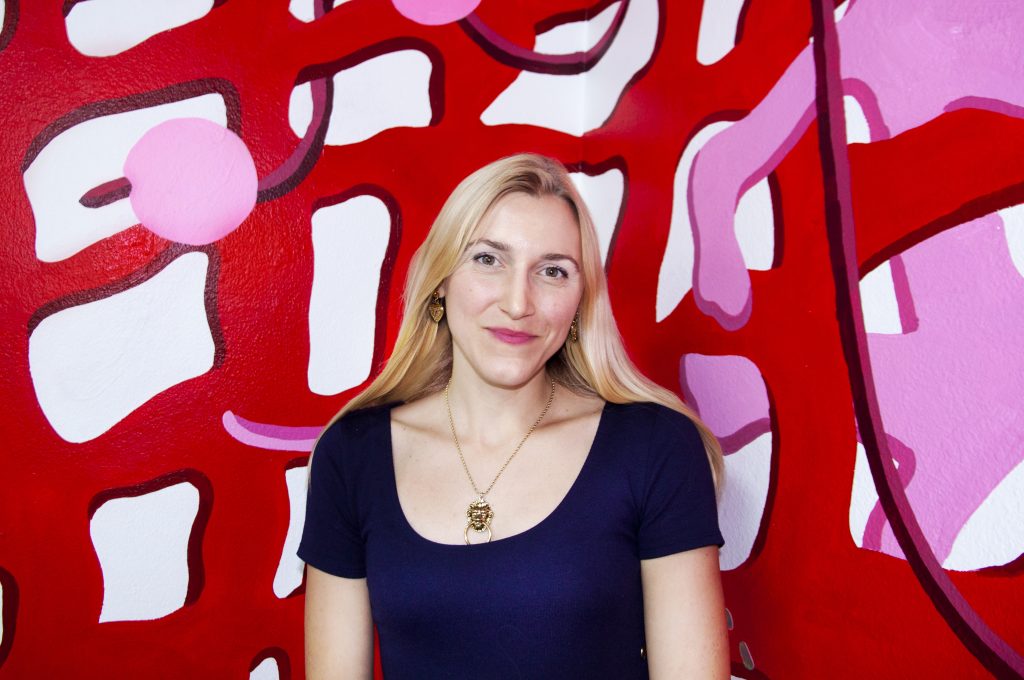
Ali Hval (she/her) (b. 1993, Sacramento, CA) is a visual artist living and working in Iowa City, Iowa. She is currently an Assistant Professor of Instruction in Painting and Drawing at the University of Iowa. Ali has received grants from the Iowa Arts Council and the Windgate Fellowship from the Center of Craft, Creativity, and Design in Asheville, North Carolina. Most recently, she received the 2024-2025 Iowa Artist Fellowship. She was the 2022 Stuart Artist-in-Residence at South Dakota State University and was a 2020 resident at the Chautauqua School of Art. Ali was named the Emerging Woman Artist by the Arts to Hearts Project in 2023. She has exhibited her work nationwide, including at Ceysson y Bénétière in New York City and the National Council on Education for the Ceramic Arts (NCECA). She has been mentioned in New York Jewelry Week, Create! Magazine, and The New Yorker.
1. How would you describe your art style, and what inspired you to become an artist?
My work is sculptural and blingy! I am multidisciplinary, working between painting, sculpture, ceramics, and installation mediums. The materials I primarily work with are ceramics and fabric, and with these, I create sculptures that echo oversized jewelry, shoes, and other fashion and domestic artifacts. These pieces feel very flirtatious and intentionally attention-seeking from far away—I hope they capture the viewer, draw them in close, and make them realize that there is something more odd and sinister about them than they initially thought.
At first, they shimmer with whimsical materials like rhinestones, pom-pom hair ties, and glossy nail polish. Up close, they present more profound ideas regarding empowerment. I can’t say I can pinpoint one specific point in my life that inspired me to be an artist. From what I remember, I’ve always wanted to create things, whether mud pies in a stream or chalk drawings in my driveway. Thankfully, what I make now aligns more with the aesthetic I enjoy.
I make exaggerated, larger-than-life sculptures which resemble pieces of jewelry. These pieces serve as self-portraits, reflecting both my own experiences and broader stories of womanhood.
Ali Hval
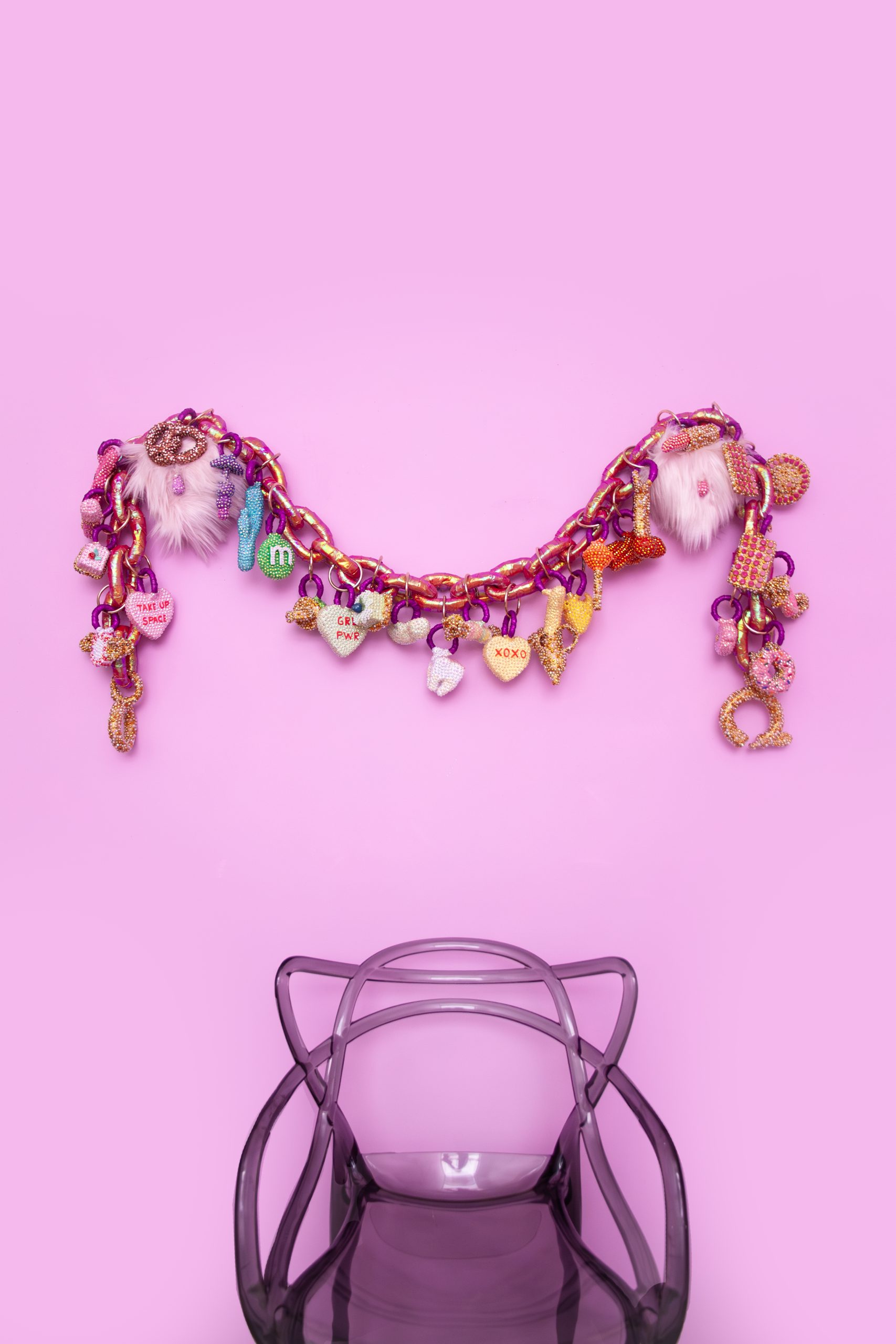
2. Can you tell us about a particular piece of art that holds special meaning for you?
A recent favorite piece is “Sugared Sweets are the Devil’s Treats.” It is an oversized charm bracelet overflowing with bedazzled ceramic charms that mix sweet treats and sex toys. To name a few charms, there is a donut, a rabbit vibrator, Smarties candy, and an M&M. Growing up in the South, I was surrounded by this unspoken rule: we avoid talking about sex. It was hush-hush, steeped in shame, and framed as inherently evil. Sweets also have this strange duality for me—something desirable but always paired with warnings: “Too much candy will rot your teeth.” This piece compares these sexual objects to sweet candy, both things which, at the time, I grew up worrying would rot me as a person the same way.
I had this experience of thinking, “What is so bad about this, and why is it considered sinful? Should I feel guilty thinking about these things?” This piece plays with this message of how both candy and sex are things we’re drawn to even though we are told they’ll somehow “ruin” us. This charm bracelet becomes a big, shiny playground for all those conflicting feelings, mixing humor with Southern guilt, but ultimately is just a self-portrait of me trying to own it all. It feels like a long overdue piece. Also, I can safely say I consume a lot of candy and am pretty OK.
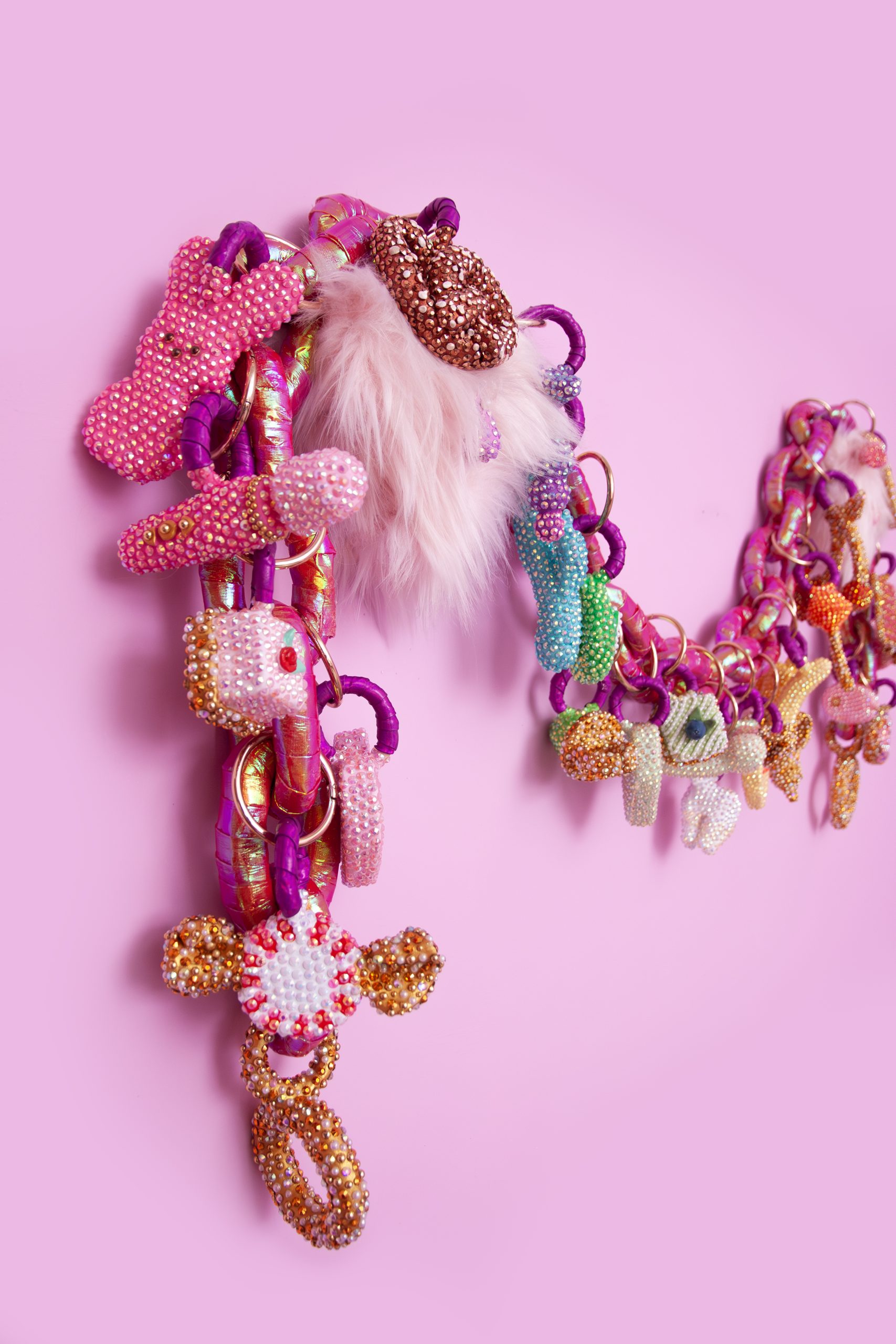
3. What challenges have you faced as an artist, and how did you overcome them?
At the start of the Covid-19 pandemic, my studio practice faced an unexpected and challenging disruption. At the time, I was an adjunct professor at a community college with access to a ceramics studio—an ideal setup for my work. However, I suddenly lost access to that studio when classes transitioned online. Once the semester ended, college enrollment dropped significantly, and I wasn’t offered a teaching position for the following term. I subsequently lost access to the ceramics studio. Ceramics was the foundation of my practice, the starting point for everything I made.
I had ideas I was excited to begin exploring in the studio, but they were abruptly cut short. Admittedly, I rode the proverbial struggle bus but eventually got off it and attempted to make sculptures with other materials. I began utilizing things like paper mâché eggs to make the base structures for my objects. Additionally, sewing became a more significant part of my practice. Sewn, stuffed objects complemented the more rigid parts of sculptures I was making. Using these new materials pushed me to explore new forms and create work I enjoyed. I eventually got access to a different ceramics studio 8 months later. However, now I know I always need to play with the materials I use and not feel too dependent on one thing. Now, I challenge myself to incorporate at least one new material into each piece, even if it’s just a tiny percentage of the whole.
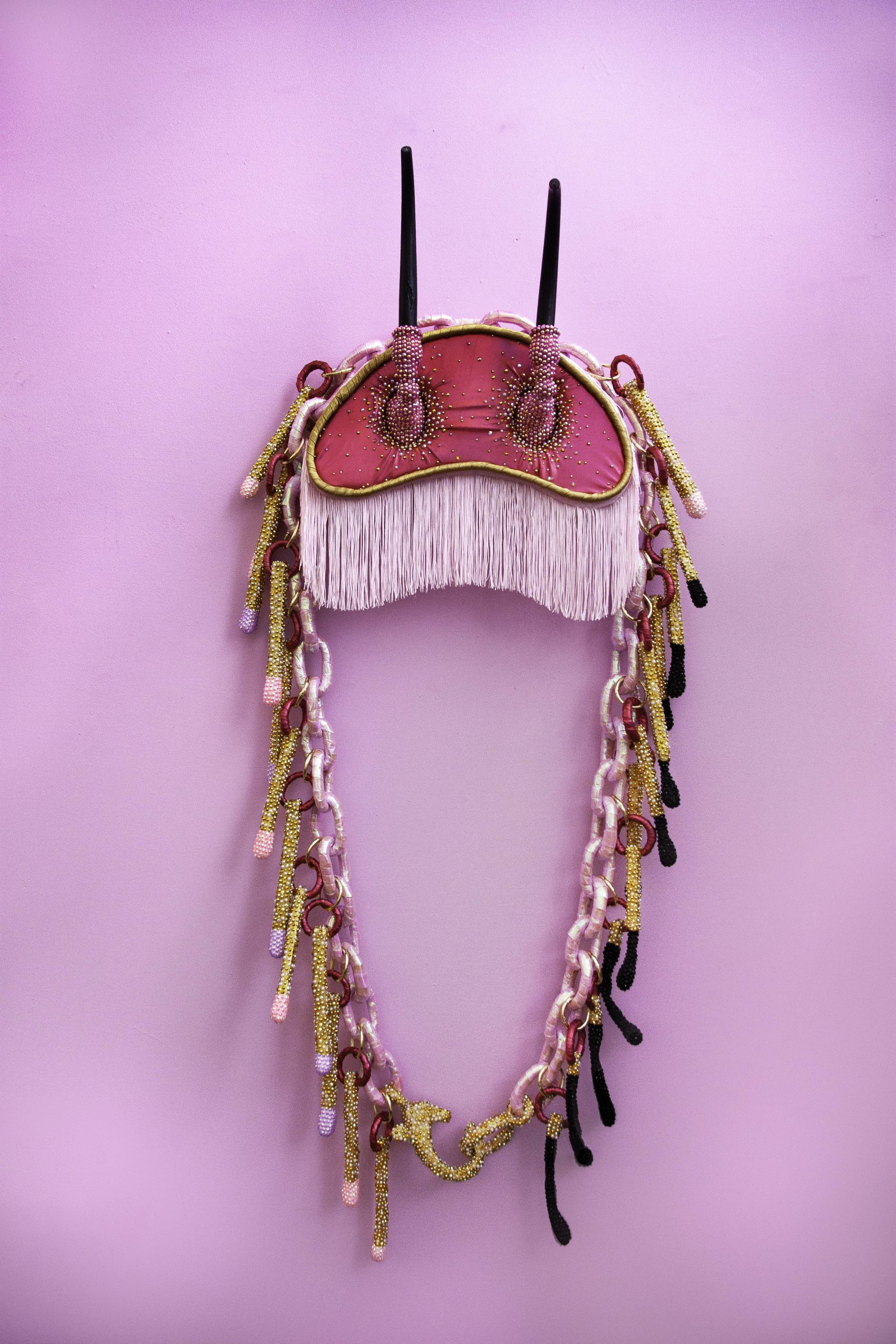
4. What has been the most rewarding aspect of your art journey?
Writing has been a unique and increasingly pertinent part of my artistic journey, and I have been working on improving it through the years. Every year, I reflect on what I have accomplished in my creative career and think, “Have I done enough as an artist? Could I have done more?” It’s a very daunting feeling at first, but then I task myself to begin writing a list. It feels so refreshing to spend an hour hashing out a list of everything I did that year, referencing my CV, social media posts, and camera roll in my phone, and realizing what I accomplished is much more than I initially thought.
Writing about this helps me recognize connections in my work, concepts, and thought processes. It also helps me see how I’ve grown as an artist over the quick turnaround of a year and analyze how I’m achieving my goals and what I can work to change in the coming year.
From afar, my work sparkles and seduces with frilly, glittering surfaces. Up close, it reveals layers of political commentary, feminist critique, and the quieter, everyday stories of being a woman.
Ali Hval
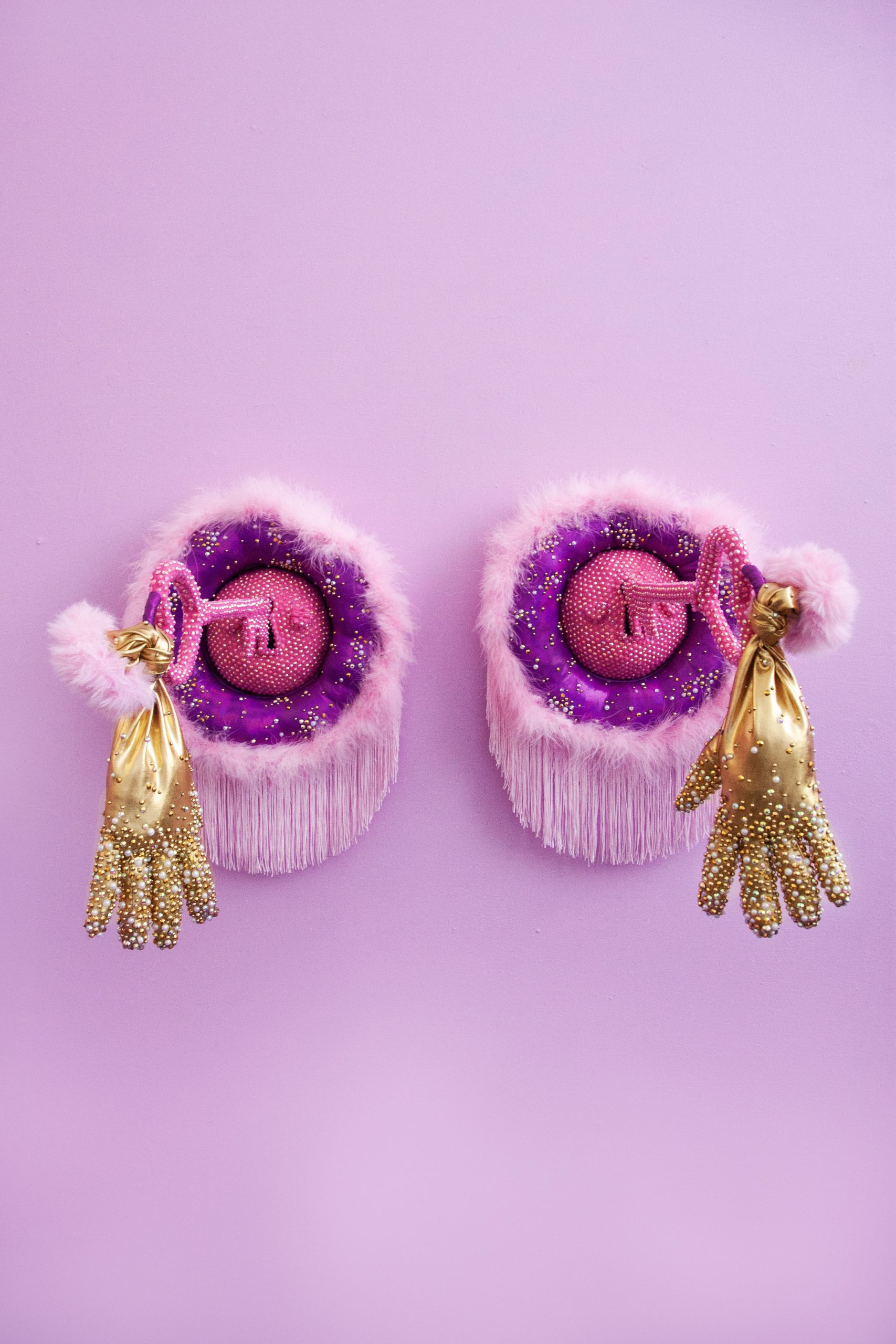
5. What advice would you give to the aspiring artists?
Apply, apply, apply, and keep active in your artistic practice. Keep applying to relevant opportunities and continue putting your name out there, even when it feels fruitless. A rejection still means that someone viewed your work. Sometimes, rejection means the wrong people were looking at your job, or maybe not all agreed. Still, one truly enjoyed your work, and applying the following year again to the same (or similar) opportunity could result in getting said opportunity. I’ve been rejected for an opportunity I thought I wanted, only for someone who rejected me to reach out, saying I was a perfect fit for another project. You can’t control how people look at your work, but you can control how consistently you are putting your work out there.
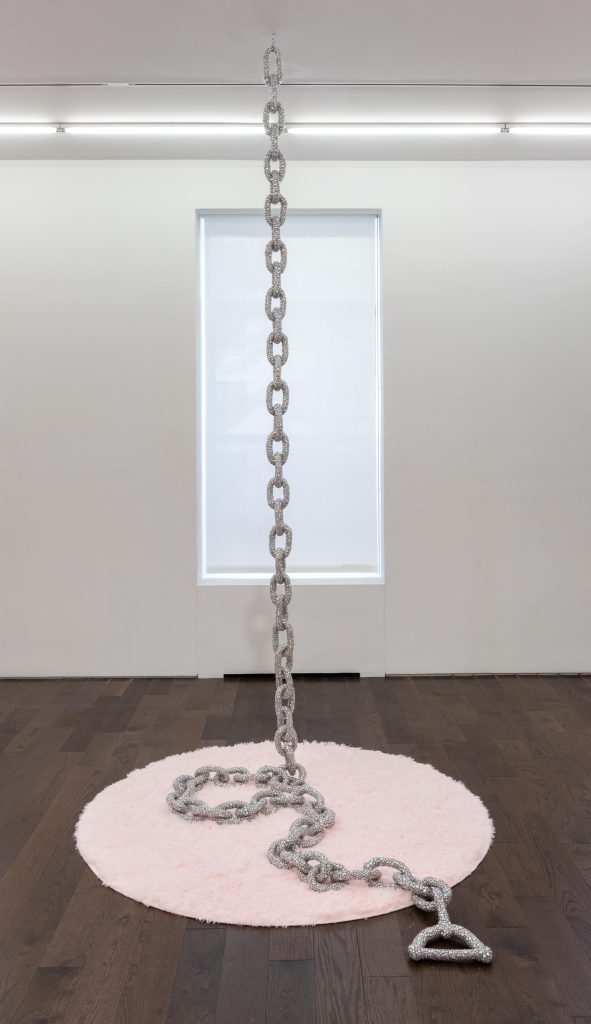
Ali Hval’s art reminds us that beauty and meaning can go hand in hand. Her playful, sparkling sculptures tell honest stories about being a woman and encourage us to embrace who we are. Through her creativity and resilience, Ali shows that art has the power to inspire, challenge, and connect us all. To learn more about Ali Hval, visit the links below.
